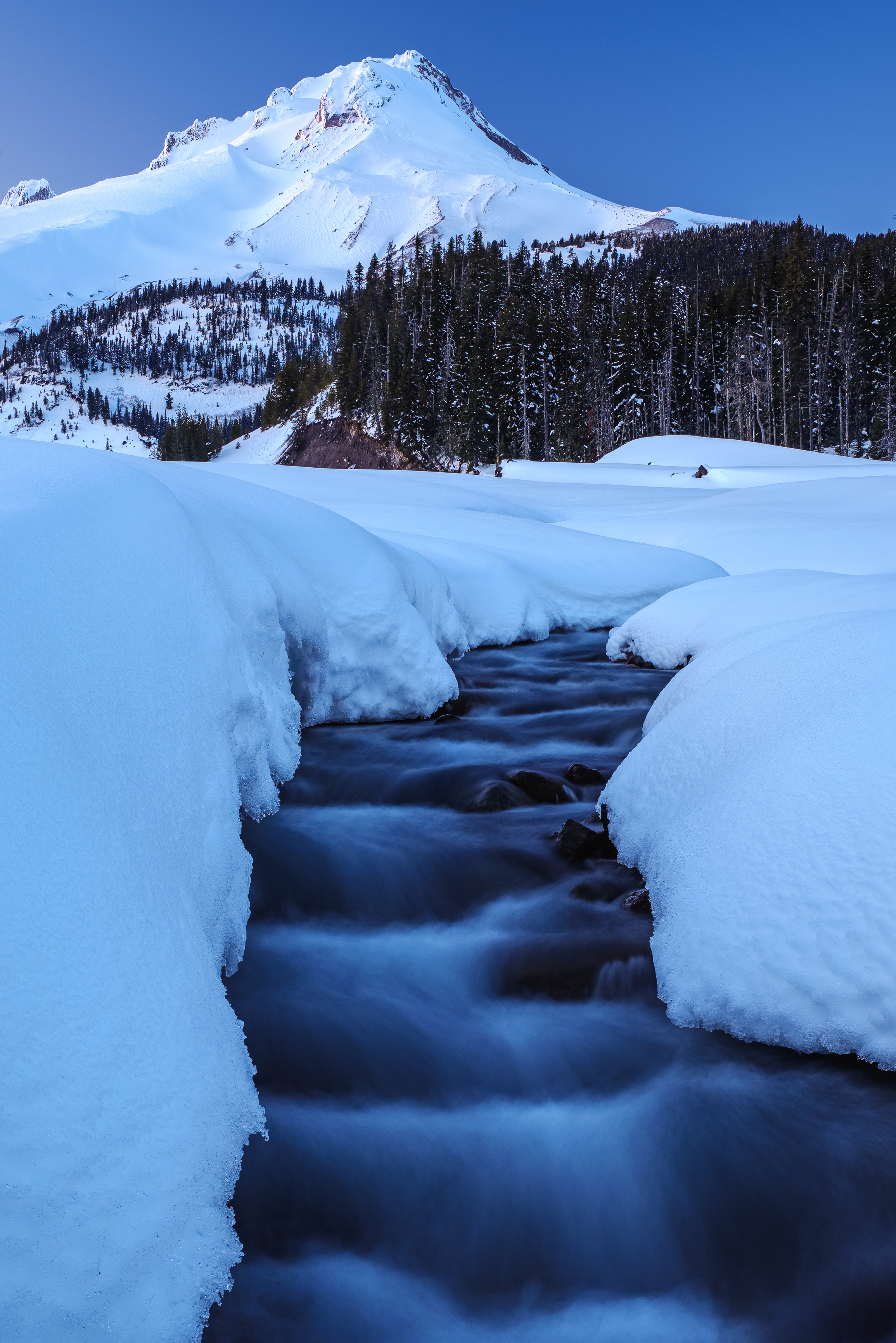We, as landscape photographers, are artists and lovers of nature. It puts us in a very unique situation where we must serve the social responsibilities of both. This includes avoiding doing harm to the environments we enjoy, helping to protect them, and providing value above that in the art we create.
Avoiding Self Destruction
At the most basic level, we must try to keep ourselves from causing more damage to our favorite subjects. Going off the trail and stomping on the life around us is unacceptable because we are meant to be the examples that others go by. Setting a good precedent for what being caretakers of these natural areas is very important going forward as more people are opting outside than ever before.
I see too many landscape photographers and others that are supposedly experienced outdoorsmen doing things that are harmful to the environment. Following the best practices of Leave No Trace are especially important because outside of footprints that we might leave and the photos we will take there ought to not be any other impacts to nature.
Even footprints in the wrong places can cause irreversible damage! We should all be respecting the land and those who call it home. Stay on the marked trails especially in fragile ecosystems as they may take decades to recover from foot traffic if they ever even get the chance. The other way many disrespect the environment is through feeding wildlife or not being as careful as they should be with their food. Locking up smellable items in areas with bears, not leaving food behind at a campsite, and never feed the animals! If they start to associate humans with food it can not only lead to dangerous situations for other people but it also creates a false source of food they would learn to rely upon.
The last part about avoiding causing destruction to areas is about the popularity of landscape photography. As images become noteworthy of locations they tend to cause a rise in the traffic because others want to go there. If we share locations with the masses it will bring in crowds that the ecosystem there might not be able to support. I am not saying to not share these beautiful images of fragile ecosystems. I am asking that we be mindful as the artists of what power we have in influencing where people do or do not go, and if we avoid giving the exact location of each image it might help to protect the subjects we love so much.
Doing Some Good Through Art
If all we ever did was live in our own bubble and avoid causing damage to things it is not enough. We have a duty to do more through art, photography, etc… Outside of the craft itself, we should be good educators giving back to the cause(s) that are important in furthering society. At a more micro level, the imagery we create and publish can do something for each person viewing it either bringing them face value or challenging them creatively.
For Individuals
Art itself is valuable. In a vacuum, landscape photography can bring value through being beautiful, but it has more power than just its aesthetics. If we are smart about how we use landscape art it can create a mood and help to bring peace to a viewer. It can also create conflict and make the onlookers think creatively about the image. Another thing that good art can do is to represent a culture or idea that is upheld by society. Iconic images from the greats push the craft and art world forward, and in landscape photography, we are growing ever more capable of showing the world in ways never seen before. Pushing a narrative about nature and the ecosystems that are more important now than ever because some might not be the same for much longer.
The idea of Neuroaesthetics is another important topic when considering what landscape photography does for an individual viewer or artist. Neuroaesthetics teaches us that the brain interacts with the visuals presented in a positive way when challenged by them. It is a scientific approach to what art does for the individual attempting to explain its value. The idea is that we use the same part of the brain to visually decipher a piece of art as is our decision making, memory, and judging pleasant/unpleasant experiences. Directing our attention to art and linking it to experiences is an important aspect of being a landscape photographer. The stronger the link is aesthetically with our viewer the better it is at encouraging a deeper connection with the art in a fundamental way. The idea is that because all of these core functions of the brain are located in a similar area, art that is aesthetically pleasing can simultaneously be the most influential.
For All Society
Art can just be something that looks nice. It can also be something with a value attached to it beyond its aesthetics just like how every parent puts their child’s art up on the fridge even though the drawing isn’t objectively good. Zooming out, we can note how art can increase social capital adding value culturally through icons of art. Philadelphia has the “Love” sculpture, Chicago has “Cloud Gate”, and New York City has the “Charging Bull”. These public art pieces add value to the people in those societies and can be attached to the culture of those they represent. Art can encourage community involvement through the idea that good art represents if the connection is strong enough and the cause ‘just’ enough.
The landscape art we create has a value in a culture that it represents and is upheld by those within the community. We exist in a society that has ever more people going outside and our small community of hikers, campers, and adventurous individuals is growing. As the demand for good landscape art grows as people connect with it and want to bring a small piece inside their home we must be aware that it isn’t just the big iconic locations that are important. Showing something that has the essence of nature can be just as important as a sweeping landscape. This is part of the reason I have begun focusing on more intimate components of landscapes. It brings a feeling and mood into frame instead of just a pretty view.
Activism and Awareness
There can also be a purpose behind the creation of a piece of art beyond the art piece itself. Donating to a silent auction for a charity is a good example of how art can transcend its original subject. Landscape art could also be part of a sponsored exhibition with a theme around a cause and raising awareness. The art doesn’t have to be ‘meta’ and be associated with the cause it is donated to. If the art shows something important though like the effects of a forest fire, deforestation, etc… that can be good, even just capturing good work and showing what is at risk can be equally valuable. (P.S. Even the simple act of selling art creates a positive impact on the economy by moving money.)
Landscape art can also become part of a political movement. There are plenty of good sociopolitical causes to throw your support behind. A constant seems to be climate change, but in more recent history and still ongoing is that of land use and our nation’s parks/monuments. Showing our landscapes and their beauty today can help to show the intrinsic value of the land untouched by a human hand. Art can help to influence the people of the nation and therefore its leaders so that we might avoid those few greedy corporations from scarring it forever with pipelines, power plants, oil rigs, etc…
Creating art that is a good representation of the subject is more important now than ever. Whether it is for an immediate cause or it is to make sure we show what the land is like today for those in the future to enjoy, the images we take today must be honest. Honesty in imagery and art is something of a delicate subject because many believe in pushing the truth and showing more of an artistic vision. The issue is that photography has become synonymous with reality even though that isn’t always the case.
Photographers have stretched mountains out, darkened skies, and ‘photoshopped’ landscapes for many years. We need to communicate as artists what we do and be open about what our vision is. Accurately representing our subjects is important, but even more important is telling the truth if your image isn’t realistic in any way.
In Conclusion
There is a lot that goes into being a landscape photographer outside of the craft itself. Creating compelling art is only one small part of being a landscape artist and the social responsibilities that come with it are an important consideration that comes with it. We shouldn’t become part of the problem in landscape photography causing unnecessary and irreversible damage to the ecosystems that we are documenting though. If there is anything that you take away from this article it is that we have a duty to protect the environment from ourselves.
Going a step beyond the most basic of social responsibilities we have, there is a lot of good we can give to the world. Show a dedication to the subject and a ‘why’ (cause) behind your art. The landscape images we create are only a small part of the story, and when you consider an image is worth a thousand words then the story we have behind the image better be good. Leaving behind a positive legacy in landscape art is more important than the simple pieces that we might create. Be a part of something bigger than just you and your images. Be an artist.







